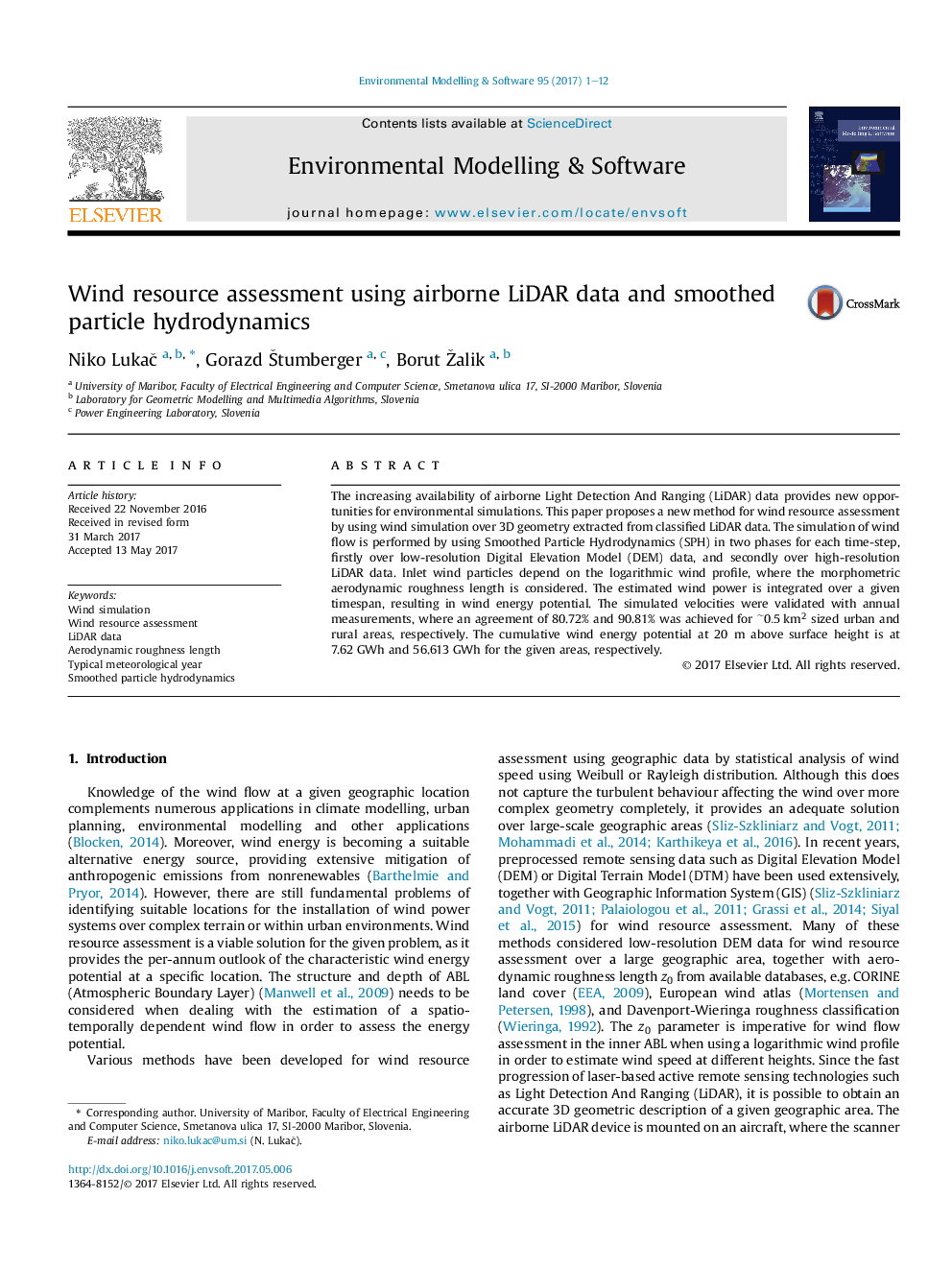| Article ID | Journal | Published Year | Pages | File Type |
|---|---|---|---|---|
| 4978104 | Environmental Modelling & Software | 2017 | 12 Pages |
Abstract
The increasing availability of airborne Light Detection And Ranging (LiDAR) data provides new opportunities for environmental simulations. This paper proposes a new method for wind resource assessment by using wind simulation over 3D geometry extracted from classified LiDAR data. The simulation of wind flow is performed by using Smoothed Particle Hydrodynamics (SPH) in two phases for each time-step, firstly over low-resolution Digital Elevation Model (DEM) data, and secondly over high-resolution LiDAR data. Inlet wind particles depend on the logarithmic wind profile, where the morphometric aerodynamic roughness length is considered. The estimated wind power is integrated over a given timespan, resulting in wind energy potential. The simulated velocities were validated with annual measurements, where an agreement of 80.72% and 90.81% was achieved for ~0.5km2 sized urban and rural areas, respectively. The cumulative wind energy potential at 20Â m above surface height is at 7.62Â GWh and 56.613Â GWh for the given areas, respectively.
Keywords
Related Topics
Physical Sciences and Engineering
Computer Science
Software
Authors
Niko LukaÄ, Gorazd Å tumberger, Borut Žalik,
